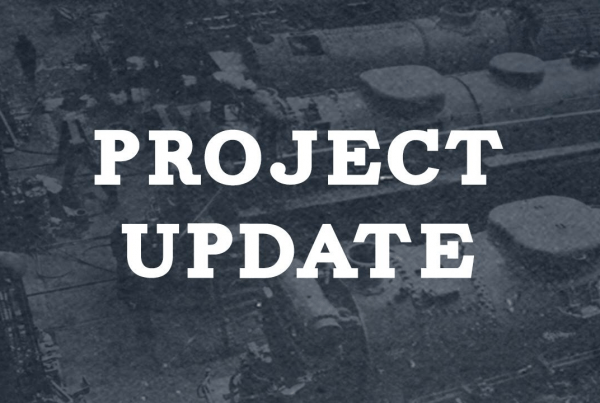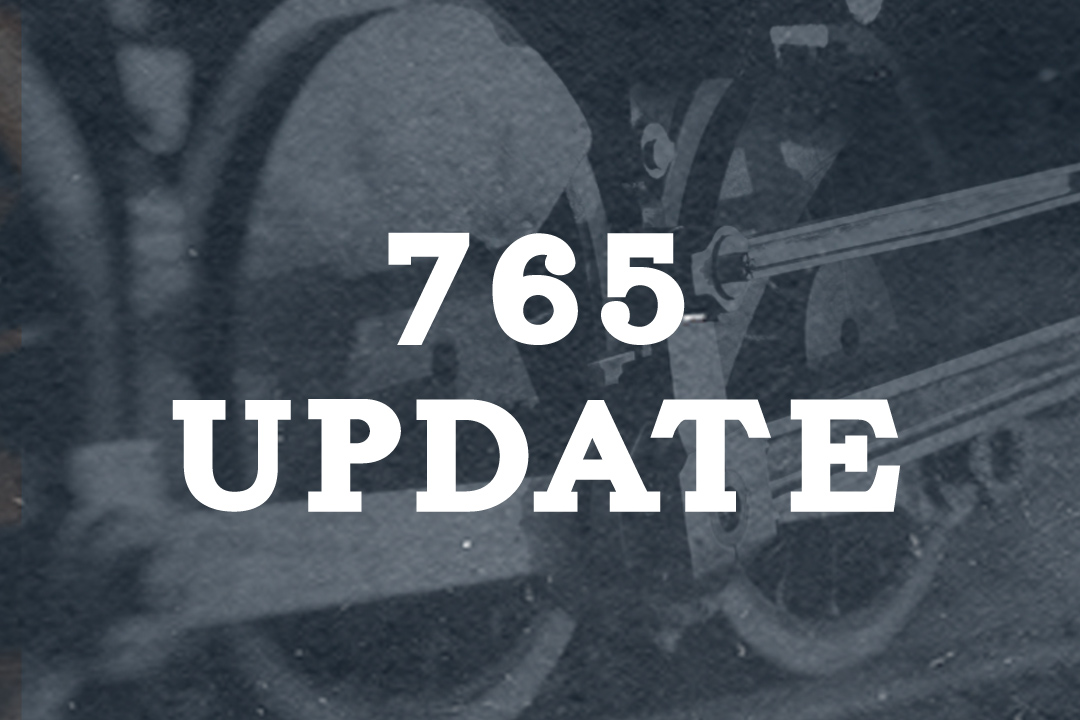Submitted by Steve Winicker.
LAST WEEKENDS SHOP ACTIVITY
Friday, John worked on washout seats, Bob W worked on insulation installation and Bob G, Zach and Chuck worked on jacketing I shopped for tools, steel, sandpaper and other parts.
Saturday, much progress was made on getting insulation on the engine and putting up jacket. The mineral wool would be done if we had not run short. Should easily finish up on next Friday. Cutting out jacket sections has progressed to the front of the sand dome above the running board. We are saving the bottom for a day when we are really, really bored. One piece of running board was taken down we will continue removing those pieces we need to get access for jacket installation.
Sunday, saw more running board loosening and sheets fitted. I believe Bob is back to the middle of the Sand dome, above the running board, on both sides of the engine. In addition to a few other pieces over the firebox. The remaining area of boiler to be mudded in was finished so all that is left is a few more pieces of 1inch outside the cab.
UPCOMING ACTIVITIES
Jerrad is going to sand and prepare more pieces to paint Tuesday on, not sure of the schedule. Bob hopes to be back Thursday for more jacket fitting. I hope to be out Friday to finish the insulation installation on the exterior of the engine and possibly start some in the cab. I hope to get John to cut more washout seats if he can make it.
SAFETY SENSE
Each year about 4,000 injuries associated with electric extension cords are treated in hospital emergency rooms. About half of the injuries involve fractures, lacerations, contusions or sprains from people tripping over extension cords. It is also estimated that about 3,300 residential fires originate in extension cords each year, killing 50 people and injuring about 270 others. The most frequent causes of such fires are short circuits, overloading, damage and/or misuse of extension cords.
The following are some tips for use of extension cords….
- Use extension cords only when necessary and only on a temporary basis. Do not use extension cords in place of permanent wiring.
- Do not remove the prongs of an electrical plug. If plug prongs are missing, loose, or bent, replace the entire plug.
- Do not use an adapter or extension cord to defeat a standard grounding device. Only place three-prong plugs in three-prong outlets, do not alter them to fit in a two-prong outlet.
- Use extension cords that are the correct size or rating for the equipment in use. The diameter of the extension cord should be the same or greater than the cord of the equipment in use.
- Keep voltage drop in mind when selecting extension cords. Longer and/or smaller gauge conductors cords result in higher voltage drops.
- Only use cords rated for outdoor use when using a cord outside.
- Keep electrical cords away from areas where they may be pinched and areas where they may pose a tripping or fire hazard such as doorways, walkways, and main traffic paths.
- Always inspect the cord prior to use to ensure the insulation isn’t cut or damaged. Discard damaged cords, cords that become hot, or cords with exposed wiring.
- Never unplug an extension cord by pulling on the cord; pull on the plug.
Proper housekeeping procedures will go a long way to prevent personnel injuries and damage to the extension cords. Always coil the cords when the job is complete and replace them in the proper storage location. Do not abandon the cords strung out on the work floor when the job is completed or at the end of the work day. The last activity of the day should be putting tools, including extension cords, away…always!


